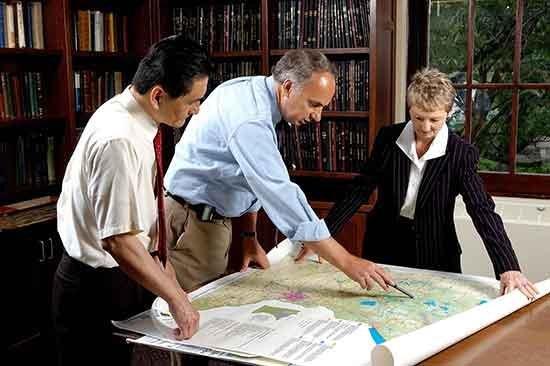Remote sensing and GIS are long-established areas of instruction at the University of Minnesota. What began in 1949 as a single course in aerial photography interpretation for forestry students has evolved into a series of courses for a multi-disciplinary audience. Today, students from agriculture, ecology, forestry, landscape architecture, geography and many other majors enroll in courses in remote sensing and GIS. Courses taught by the Department of Forest Resources faculty and staff are listed below. Students are also encouraged to explore other geospatial courses (e.g. U-Spatial and NRSM) at the University of Minnesota.
Remote Sensing Courses
FNRM 3262/5262. Introductory Remote Sensing and Geospatial Analysis (3 credits, Fall)
Introductory principles and techniques of remote sensing and geospatial analysis applied to mapping and monitoring land and water resources from local to global scales. Examples of applications include: Land cover mapping and change detection, forest and natural resource inventory, water quality monitoring, and global change analysis. The lab provides hands-on experience working with satellite, aircraft, and drone imagery, and image processing methods and software. Prior coursework in Geographic Information Systems and introductory Statistics is recommended.
FNRM 3362/5362 Drones: Data, Analysis, and Operations (3 credits, Spring)
This course explores principles and techniques of Uncrewed Aircraft Systems (UAS, also 'drones'), applied to natural resource and environmental issues. The course provides hands-on experience with UAS vehicles, sensors, imagery, and software. Course topics include: UAS flight characteristics, regulations/safety, mission planning, flight operations, data collection, image analysis, and applications. Examples of UAS applications to be explored include forest and natural resource inventory, wetland monitoring, and land cover mapping.
FNRM 3462/5462. Advanced Remote Sensing and Geospatial Analysis (3 credits, Spring)
This course builds on the introductory remote sensing class, FNRM 3262/5262. It provides a detailed treatment of advanced remote sensing and geospatial theory and methods including Object-Based Image Analysis (OBIA), lidar processing and derivatives, advanced classification algorithms (including Random Forest, Neural Networks, Support Vector Machines), biophysics of remote sensing, measurements and sensors, data transforms, data fusion, multi-temporal analysis, and empirical modeling. In-class and independent lab activities will be used to apply the course topics to real-world problems. Prior coursework in Geographic Information Systems, remote sensing, and statistics is necessary.
FNRM 3562/5562. Field Remote Sensing (1 credit, Fall)
Field applications of remote sensing, sampling/measurement methods to inventory/mapping for forest and other natural resources.
GIS Courses
Full descriptions of GIS courses can be found here
ESPM 3031/5031. Applied GPS for GIS (2 credits)
This course covers the principles and fundamentals of GPS and the use of GPS units in the field. An introductory course in GIS is recommended. The course meets once each week for 2 hours. Additional time is required to complete field exercises.
FNRM 3131/5131. Geographical Information Systems for Natural Resource Analysis (4 credits)
Introduction to GIS. Focuses on natural resources. Data structures, sources, collection, and quality. Lab exercises introduce geodesy, map projections, spatial analysis, and cartographic modeling.
ESPM 4295W/5295. GIS in Environmental Science and Management (4 credits)
Application of spatial data inventory/analysis in complex environmental planning problems. Spatial data collection, database development methods, including GPS, DLG, TIGER, and NWI data, and spatial analysis.
Independent Study
FNRM 8205. Research Problems: Spatial Data Analysis. (1-5 credits)
Independent research on GIS or remote sensing under faculty guidance.
